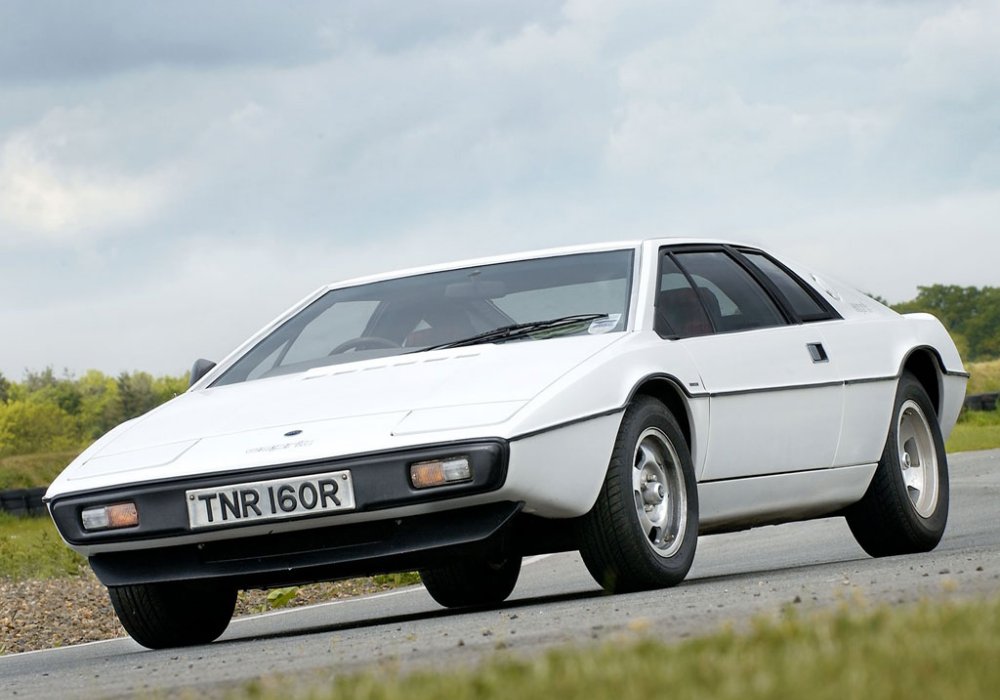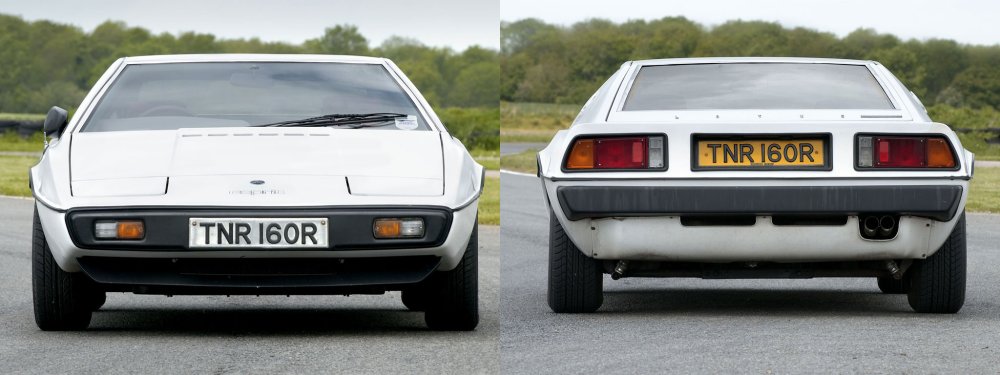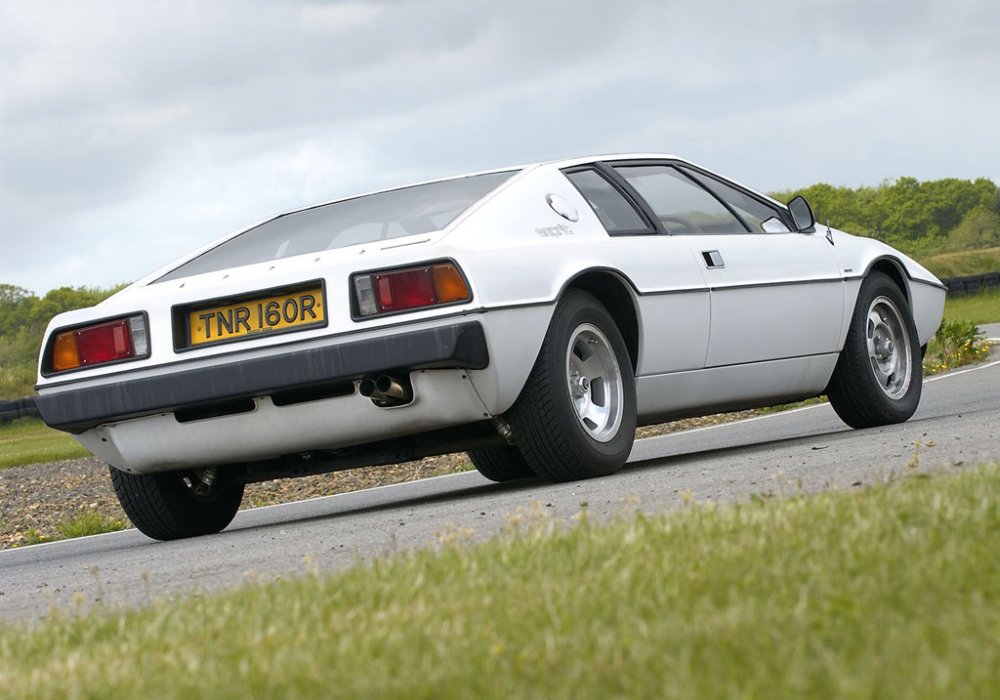Description
The Lotus Esprit was introduced in 1976 and quickly became one of the most recognisable and celebrated models in the company’s history. Designed by Giorgetto Giugiaro, the Esprit represented a bold new direction for Lotus, combining cutting-edge styling with the company’s established expertise in lightweight engineering and chassis design. It replaced the Europa and became the flagship of the Lotus range for nearly three decades, remaining in production until 2004. Its sharp, wedge-shaped body, mid-engine layout, and fiberglass construction made it one of the most striking sports cars of its time, while its continuous development over the years ensured that it remained competitive and relevant through successive generations.
The Esprit was built around a backbone chassis similar in principle to that used in the Elan and Europa but adapted for a mid-engine configuration. This setup gave the car excellent rigidity and balance, essential for the handling precision Lotus was known for. The early Esprit models, designated S1, were powered by the Lotus Type 907 engine — a 1,973 cc all-aluminium, twin-cam, sixteen-valve four-cylinder engine producing around 160 horsepower. With a weight of only about 900 kilograms, the Esprit S1 could reach 60 mph in under eight seconds and achieve a top speed close to 130 mph. The combination of light weight, sharp steering, and mid-engine balance made it one of the most responsive and agile sports cars of its era.
The Esprit S1 made an immediate impact not only for its performance but also for its futuristic styling. Giugiaro’s “folded paper” design, with its crisp angles and low stance, epitomised 1970s automotive design trends. The car’s interior was minimalist yet driver-focused, featuring low seating, a flat instrument panel, and a sense of cockpit enclosure that enhanced the feeling of being in a pure sports machine. The Esprit’s fame was cemented by its appearance in the 1977 James Bond film The Spy Who Loved Me, where it famously transformed into a submarine — a moment that turned the car into a pop-culture icon and brought unprecedented attention to the Lotus brand.
In 1978, the Esprit S2 replaced the original model, incorporating a range of practical improvements. It featured redesigned bumpers, Speedline alloy wheels, and improved cooling and ventilation. Mechanically, it retained the same engine but gained small refinements to reliability and build quality. The S2.2 variant, introduced in 1980, increased engine capacity to 2.2 litres with the new Type 912 unit, improving torque and flexibility. Around the same time, Lotus launched the Esprit Turbo, which transformed the car’s character and performance. Powered by the turbocharged Type 910 engine producing 210 horsepower, the Esprit Turbo could reach 60 mph in about 6 seconds and a top speed of over 140 mph, making it a genuine rival to cars such as the Porsche 911 and Ferrari 308. The Turbo model also introduced aerodynamic bodywork enhancements and distinctive graphics that visually set it apart.
Throughout the 1980s, the Esprit continued to evolve with ongoing improvements to both engineering and styling. In 1987, a major redesign by Peter Stevens softened the sharp Giugiaro lines, resulting in a smoother and more modern shape for the Esprit X180 generation. This version also introduced improved aerodynamics, better build quality, and more refined interiors. The naturally aspirated and turbocharged four-cylinder engines remained the mainstay, but with power outputs steadily increasing over time. The Esprit SE of 1989, for example, featured a turbocharged 2.2-litre engine with charge-cooling technology, producing around 264 horsepower and achieving 0–60 mph in under 5 seconds.
In 1993, Julian Thomson further updated the Esprit’s design for the S4 model, which modernised the exterior while retaining its instantly recognisable proportions. The S4 introduced power-assisted steering, air conditioning, and other comfort features that made the Esprit more practical for everyday use. The most powerful four-cylinder version was the Esprit Sport 300, producing 302 horsepower and developed with lessons learned from Lotus’s racing programmes.
The final and most dramatic evolution came in 1996 with the introduction of the Esprit V8. This model used the Lotus Type 918 engine, a twin-turbocharged 3.5-litre V8 producing 350 horsepower. The new engine transformed the Esprit into a true supercar, capable of reaching 175 mph and sprinting from 0–60 mph in under 5 seconds. Despite its performance, the car retained Lotus’s trademark balance and handling finesse, offering an involving driving experience that remained distinct from its more powerful but heavier European rivals.
Production of the Lotus Esprit ended in 2004 after nearly thirty years and numerous iterations, making it one of the longest-running and most continuously developed sports-car lines in British automotive history. Across its life span, the Esprit evolved from a lightweight, minimalist sports car into a sophisticated, high-performance supercar, while always staying true to the principles of lightness, precision, and driver involvement that defined the Lotus brand.
Today, the Lotus Esprit is regarded as a design and engineering icon. Each generation has its own appeal: the early Giugiaro cars for their purity and style, the 1980s Turbos for their performance and flamboyance, and the 1990s V8 models for their maturity and power. Collectors and enthusiasts value the Esprit not only for its looks and driving dynamics but also for its place in automotive and cultural history. It remains one of the defining Lotus models — a car that embodied the company’s innovative spirit and proved that British engineering could stand confidently among the world’s best.


